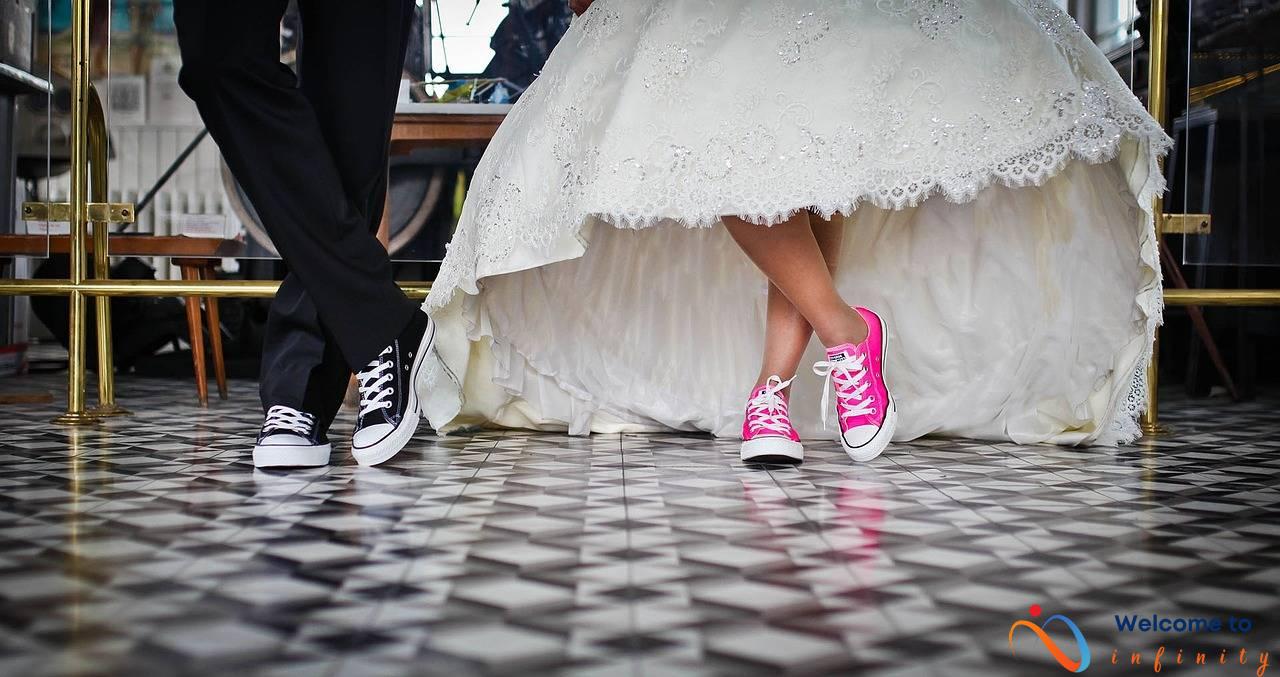If you're planning a wedding ceremony, you may be wondering about the proper etiquette for designing and distributing programs. A wedding ceremony program is a helpful guide for guests to follow along with the events of the wedding and It can also serve as a keepsake for the couple to look back on after their special day.
So what information should be included in a wedding ceremony program? The program should generally include details about the order of events, such as the processional and recessional music. It should also feature the names and titles of members of the wedding party, including the maid of honor, best man, bridesmaids, groomsmen, and any ushers.
When it comes to wedding ceremony etiquette, remember that not every guest needs to receive a program. Typically, programs are given to ushers or handed out by a designated person as guests arrive. A general rule of thumb is to provide one program per couple or family to save on printing costs. Additionally, it's a good idea to distribute programs at least 15 minutes before the ceremony begins. This ensures that guests have enough time to read through the program and know what to anticipate.
Design-wise, the program should reflect the style of your wedding. You can include personal touches such as photos of the couple or quotes that hold special meaning to you both. Keep in mind that the program should also be easy to read and understand so that guests can easily follow along with the ceremony. With these etiquette guidelines in mind, you can design and distribute wedding ceremony programs that will be appreciated by your guests and enhance your wedding day experience.
What is a Wedding Ceremony Program?
A wedding ceremony program is a printed document that outlines the events of the wedding ceremony. It usually includes the names of the bride and groom, the date and time of the ceremony, the order of events, and the names of the wedding party. The program can also include any special messages, quotes, or poems that the couple wants to share with their guests.
The purpose of a wedding ceremony program is to inform guests about what to expect during the ceremony. It can also help guests follow along with the ceremony and understand the meaning behind certain rituals or traditions. Including a program in your wedding ceremony is a thoughtful way to show guests that you appreciate their presence and want to make sure they feel included and informed throughout the ceremony.
When designing your wedding ceremony program, it's important to consider the style of your wedding. The program should reflect your wedding theme and overall aesthetic. You can choose from a variety of designs and layouts, from simple and elegant to more elaborate and decorative.
In terms of timing, it's best to distribute the programs before the ceremony begins. Typically, ushers or other designated individuals will hand out the programs to guests as they arrive. This gives guests a chance to read through the program and familiarize themselves with the order of events before the ceremony begins.
Designing Your Wedding Ceremony Program
Designing a wedding ceremony program is important as it reflects the overall style of your wedding. Here are some tips to make your program visually appealing and easy to follow for your guests:
- Choose a high-quality paper or cardstock that matches the color scheme of your wedding
- Consider incorporating a design or emblem that is meaningful to you and your partner
- Use easy-to-read fonts that are legible for all ages
- Include labeling or numbering for each section to make it easy for guests to follow along
- Add a personal touch by including photos or stories of your relationship
- Consider making separate programs for different cultures or languages present at your wedding
- Proofread your program multiple times to avoid any spelling or grammatical errors
Remember to keep the program concise and to the point, highlighting the most important details of the ceremony.
Elements to Include in Your Ceremony Program
When designing your wedding ceremony program, it's important to include all essential information for your guests. This includes the order of events to let guests know when to expect certain parts of the ceremony. Typically, the program will start with the names of the couple and the date of their wedding, followed by the ceremony schedule. This may include opening remarks, musical selections, the exchange of vows, the exchanging of rings, and any readings or performances.
Additionally, it's important to include the names and titles of your wedding party in the program. This will help guests put names to faces and understand the roles of the wedding party in the ceremony.
If your ceremony includes any special customs or traditions, such as a unity candle or sand ceremony, be sure to include a brief description of what each one symbolizes. This will help guests understand the significance of each tradition and make the ceremony more meaningful for all attendees.
Overall, when designing your wedding ceremony program, keep in mind that it is a tool to help guide guests through the ceremony. Make it easy to read and follow, and don't forget to include any special acknowledgments or dedications, such as a tribute to a loved one who has passed away. Use the
- tag to create bullet points for each element in the program to help guests easily identify the different parts of the ceremony.
- Place programs at the entrance: One of the most common ways to distribute wedding ceremony programs is to place them at the entrance of the ceremony site. Make sure they are displayed clearly and in an orderly manner so that guests can easily pick them up as they enter.
- Hand them out personally: If you prefer a more personal touch, you can have your wedding ceremony ushers hand out programs to guests as they arrive. This is a great way to ensure that everyone receives a program and allows your ushers to warmly greet each guest as they enter the ceremony site.
- Distribute them after seating: Another option is to have ushers hand out programs to guests after they've been seated. This gives your guests more time to settle in and become comfortable with their surroundings before receiving the program. Just be sure that the programs are distributed well in advance of the start of the ceremony to avoid last-minute confusion.
- Include programs in welcome bags: If you're providing welcome bags for your guests, consider including a wedding ceremony program in the bag. This is a great way to ensure that all guests receive a program, especially in situations where not everyone will be attending the ceremony.
Adhering to Wedding Ceremony Program Etiquette
When it comes to wedding ceremony program etiquette, there are a few dos and don'ts to keep in mind. Firstly, it's important to decide who will receive a program. Typically, all guests attending the ceremony should receive one. It's also a good idea to include extra programs for vendors and anyone else involved in the ceremony.
Next, timing is key. Programs should be distributed before the ceremony begins, to give guests time to review the information and familiarize themselves with the order of events. Programs can be handed out by ushers or placed on seats before the ceremony.
Another important aspect of program etiquette is the information included. While it's important to include the order of events and the names of the wedding party, it's best to keep personal details to a minimum. Avoid including lengthy backstories or inside jokes that only a select few guests will understand.
Finally, it's important to consider the design of the program. Make sure it matches the style of your wedding and is easy to read and follow. Consider using a simple and elegant design that won't detract from the ceremony itself.
By adhering to these dos and don'ts of wedding ceremony program etiquette, you can ensure that your guests are informed and well-prepared for the ceremony without detracting from the special day itself.
Distributing Your Wedding Ceremony Programs
Once you've designed your wedding ceremony program, it's time to think about how you'll distribute them to guests on the big day. You want to make sure guests have easy access to the program and that they receive it at the appropriate time. Here are some best practices to keep in mind when distributing your wedding ceremony programs.
When it comes to timing, it's best to distribute wedding ceremony programs no more than 30 minutes before the start of the ceremony. This allows guests enough time to review the program and become familiar with the order of events without causing them to wait too long before the ceremony starts. Furthermore, make sure that your wedding ceremony ushers are prepared to answer any questions guests may have about the program, such as the order of events, location of restrooms, and so on.
In summary, distributing wedding ceremony programs can be done in a variety of ways, from placing them at the entrance of the ceremony site to handing them out personally. When deciding on how to distribute your programs, keep your guests' comfort and convenience in mind, and make sure that your ushers are well-prepared to answer any questions they may have.












